Innovation in food bears fruit into something bigger and bolder. One of which is the continuously growing trend of flatbread and pizza. Now if you’ve tried the combination of both, there are for sure some questions racing through your mind.
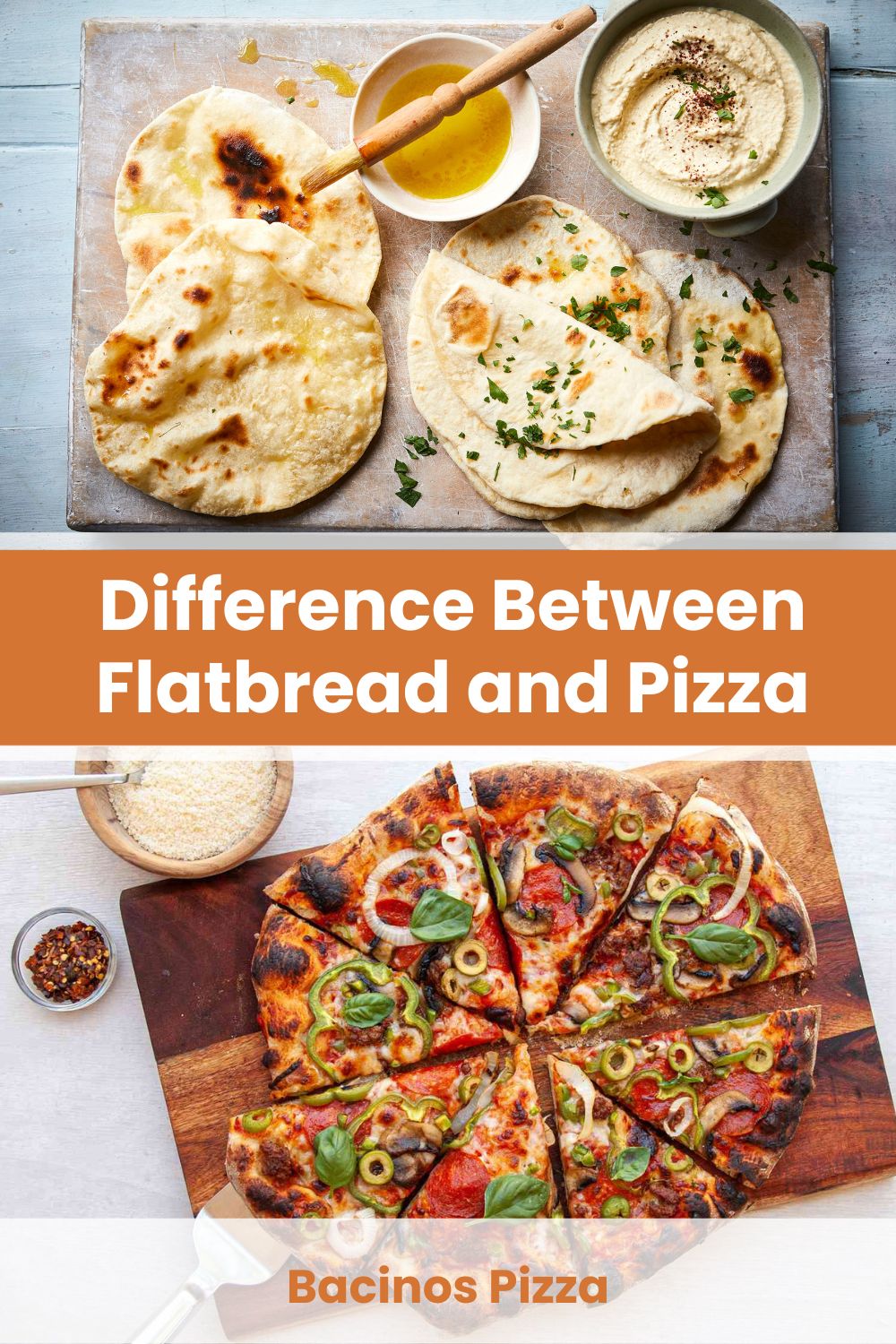
Is there a difference between flatbread and pizza? Is flatbread a type of pizza? Which one is the healthier choice?
Today, we’ll uncover the answer to your questions and provide a detailed comparison between the two. From the origin of flatbreads and the birth of pizza to the seven dimensions that make them unique to each own.
Flatbread Vs. Pizza: A Quick Overview
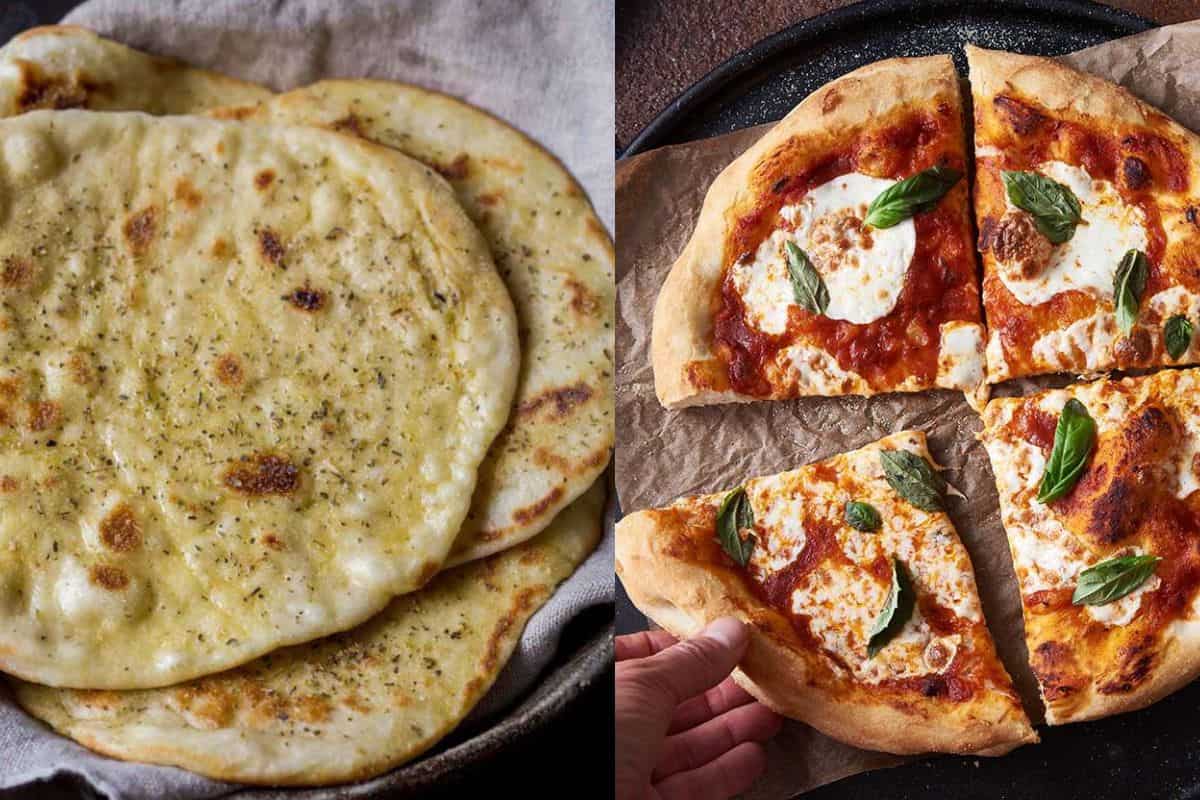
Before we thoroughly tackle their differences, here’s a quick overview of what to expect.
| Criteria | Flatbread | Pizza Dough |
| Dough Ingredients | Unleavened | Leavened |
| Preparation Time | Shorter | Longer |
| Crust Texture and Flavor | Mild flavor; chewy center and crispy edges | Bready flavor and texture; soft and airier |
| Size and Shape | Unfinished rectangular or ovular shape | Circle or rectangle |
| Toppings | Same as the pizza but offer more atypical toppings | Follows the usual sauce, cheese, and meat combo |
| Method of Baking | Par-baking, high-heat brick oven | Regular ovens, brick ovens |
| Calories | 97 kCal | 120 kCal |
The Origin of Flatbread
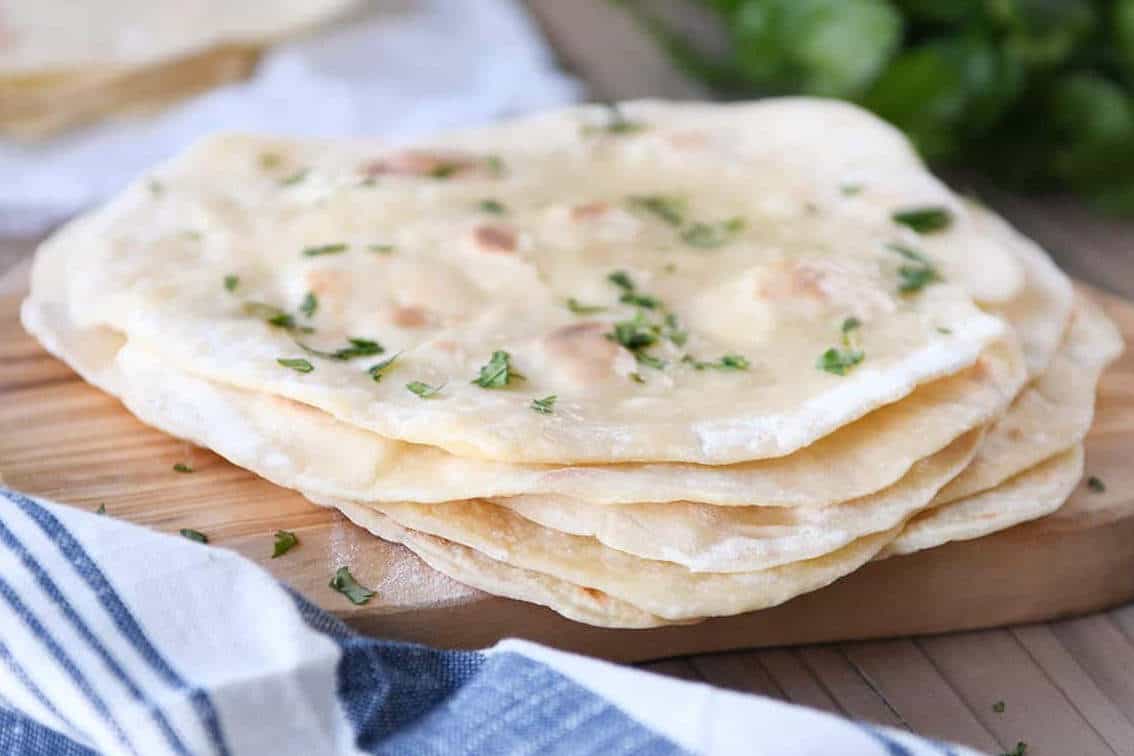
Hunter-gatherers who lived 14,400 years ago cultivated grains from a few select plants to create bread. Little did they know that this discovery would turn out to be one of the trends in the culinary world: the flatbread.
Flatbread is one of the earliest types of bread made in history. It is traditionally unleavened, made with the most basic of ingredients. It is rolled out flat and baked in a brick oven to achieve its crispy texture.
Like others, Over time, flatbreads spread to different countries, developing into a new form. Pita, Chapati, and Naan are just a few types common on grocer’s shelves and in restaurants.
Is Flatbread a Type of Pizza?
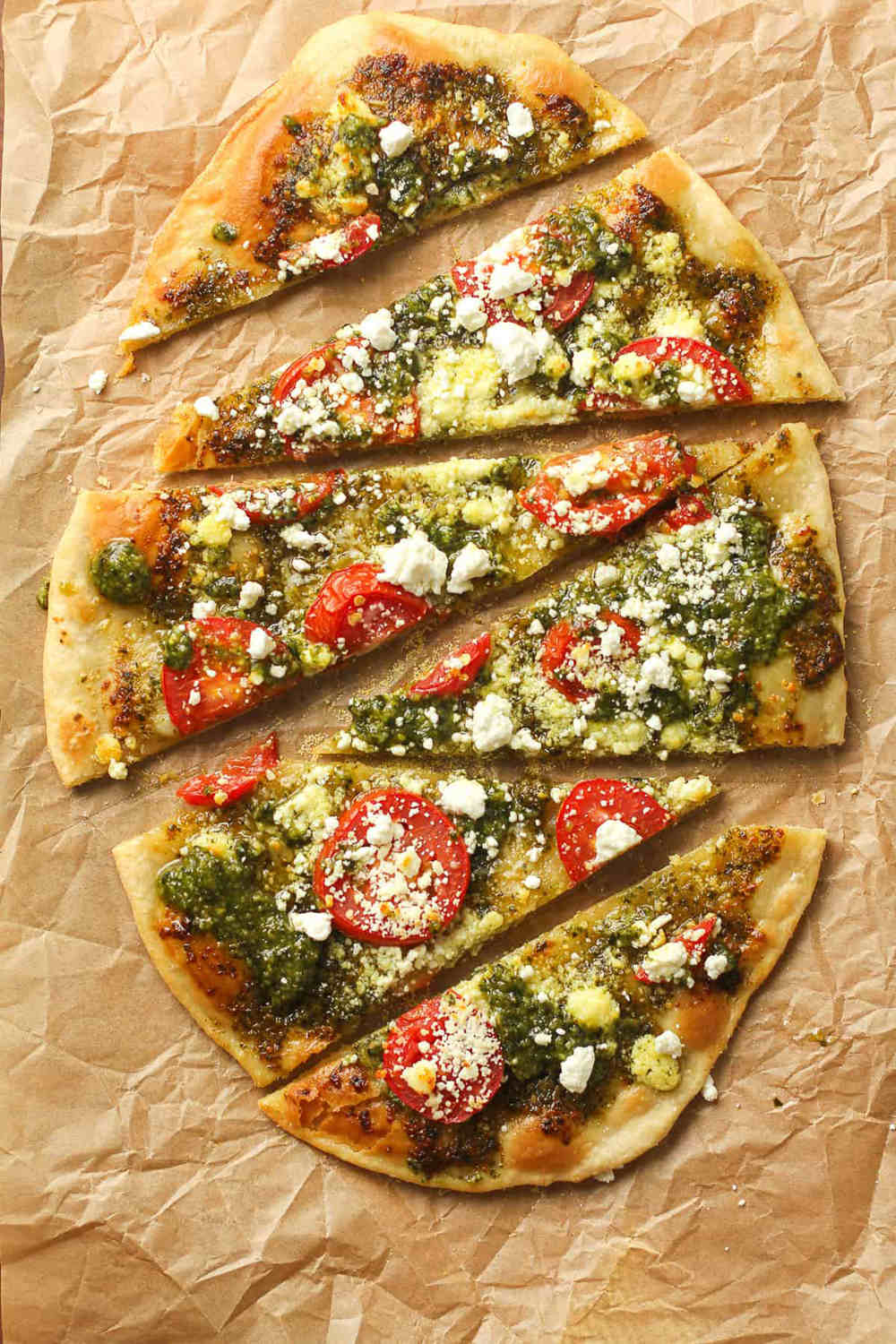
Some pizzas are made of flatbread, but not all flatbreads are pizzas. If you’re a history geek and well aware of the history of pizza, you probably know the answer to this. But if you’re new here, let us enlighten you with a quick backstory.
Before pizza became globally popular, people treated it as a poor man’s meal. Street vendors served it in the form of flatbreads with various toppings. But it all changed when immigrants replicated it into a crusty pizza. From then on, pizzerias created their versions, accounting for many styles seen today.
Going back, is flatbread a type of pizza? Technically, flatbread is a type of bread (the name says it all). But it can turn into a pizza with some added toppings and pizzaz!
The Differences Between Flatbread and Pizza
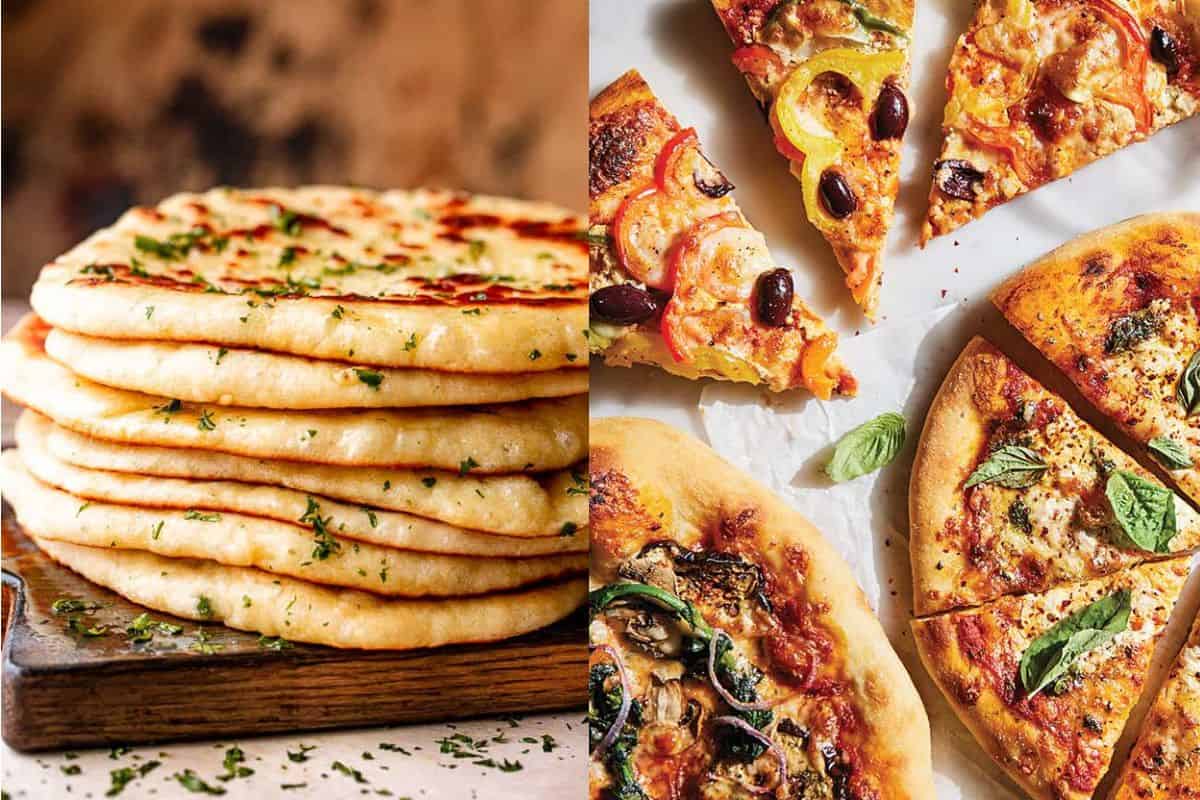
Many see the two as the same, but they have unique characteristics that set them apart from each other. Starting with the dough ingredients down to their nutritional value, we’ll discuss it all.
Dough Ingredients
Water, flour, and salt. These are all the ingredients you need to make a flatbread. Sounds simple, right? Unlike pizza, traditional flatbread doesn’t require yeast, thus the name.
Although some types contain yeast or sourdough to create a thicker texture. A few examples of single-layered leavened flatbread are:
- Naan
- Ciabatta
- Focaccia
- Malouge
On the other hand, double-layered flatbreads include:
- Pita
- Baladi
- Khobz
- Shami
General commercial flatbread production incorporates yeast or baking powder to lengthen shelf life, which is why these flatbreads can be stored for longer periods, making them more common in grocery stores.
In terms of dough preparation, it is clear that pizza needs more time to rise because of the presence of yeast. So when you’re in a rush to make pizza at home, flatbread would be the answer.
Crust Texture and Flavor
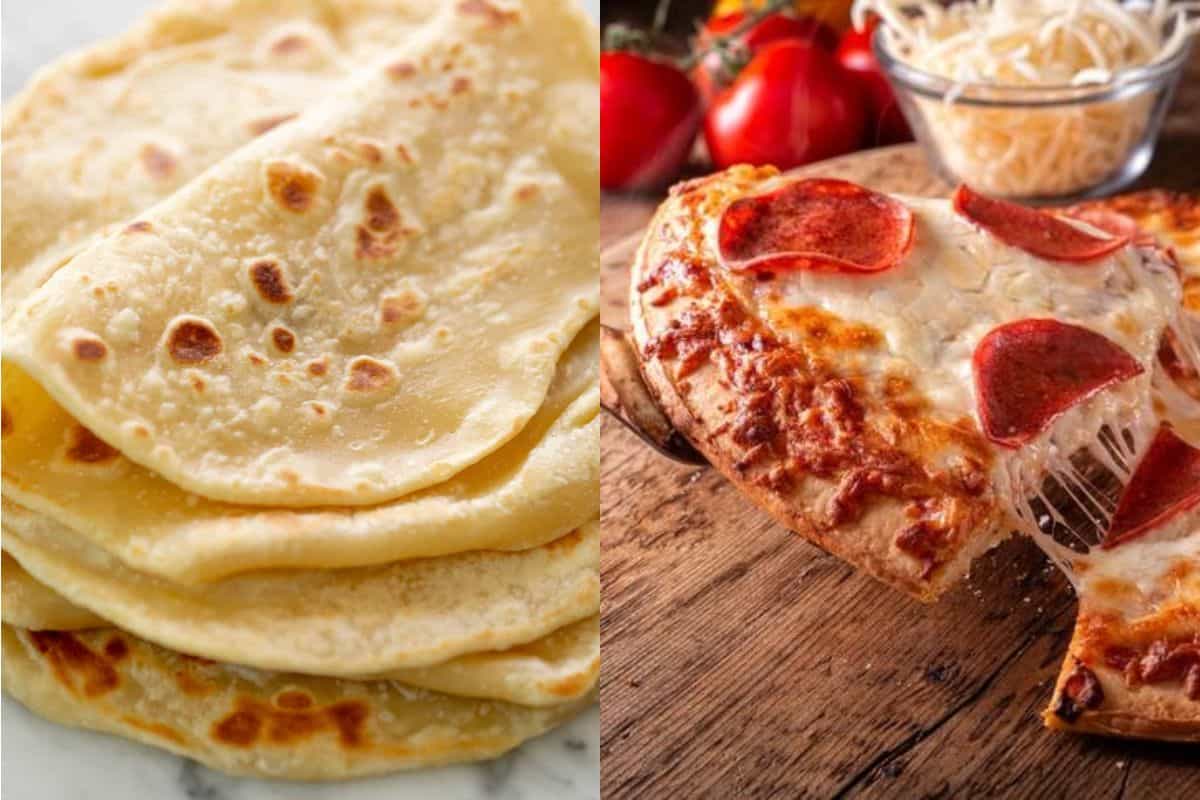
With the absence of a leavening agent, flatbread creates a chewy center and crispier edges. It has a mild taste that develops a different flavor profile once baked in high heat. The charred tones also add an enticing smell and taste to the overall composition of the bread.
Aside from this, some pizzerias compare flatbread to a cracker-like crust because of the snappy texture when overcooked. The low moisture content also adds to this characteristic. But with the proper cooking temperature, there is no need to worry about getting it too toasted!
Conversely, pizza dough has a bready taste and flavor, making it chewy to bite. The chemical process by the yeast also gives it a softer and airier feel.
How can you tell if the crust texture and flavor are fitting for your taste?
First, you need to know what you want in a pizza.
- Does it have to have a lot of toppings? Or do you like to keep it minimal? If the latter, a flatbread will do so as not to overpower the crust.
- Do you like the base buttery and chewy? A thick pizza crust can do the trick!
- How about a pizza for an appetizer? Craft a flatbread with marinara, cheese, and basil. It’ll surely satisfy your guests.
Size and Shape
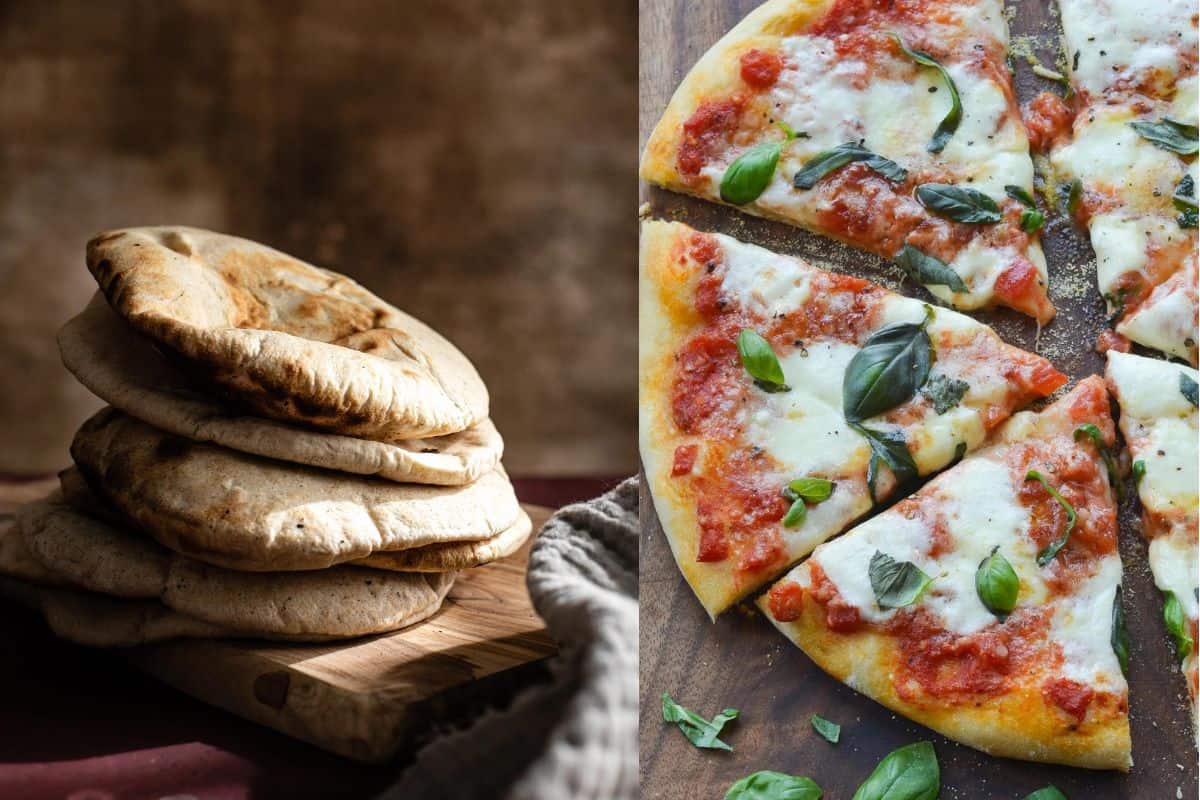
One of the most distinguishing characteristics of flatbreads to pizzas is their shape and size. The former is flattened out using a roller pin and forms its shape by hand. That’s why most flatbreads have an unfinished look that makes each piece unique.
Pizza dough, conversely, requires more intricate shaping to achieve a polished circle or rectangle. The equal diameter gives them an even cut of each slice without one getting too much crust. Unless you choose to go with a party cut, you’ll surely get the short end of the straw.
In terms of size, flatbread is smaller than a pizza, making it suitable as an appetizer in many restaurants.
Choice of Toppings
Pizza toppings offer a wide variety but are not as exotic as flatbreads. The former contains mainstream ingredients like meat, cheese, and tomato sauce. If we were to order from a pizza chain, we know immediately at least five of their pizza menu. That’s how instilled the flavors are in our brains.
With that, many pizzaiolo stick to the tradition because people already have expectations. They are so familiar with the taste that offering a new flavor might not pass the standards of the consumers.
Flatbreads, on the other hand, maximize their versatility. This bread became the platform for many restaurateurs to incorporate adventurous flavors. Some ingredients you’ll find are:
- Blue cheese
- Goat cheese
- Burnt honey
- Smoked yogurt
- Feta made from sheep’s milk
Flatbreads offers a way to discover different culture through food. The form is familiar to many, but the possibilities are endless.
Methods of Baking
Par-baking is common in flatbreads to provide a crispier texture. In par-baking, the dough cooks for a few minutes before placing the toppings and baking it again. Although this is possible in pizzas, it is not commonly applied.
When it comes to the equipment, flatbreads are best baked in a high-heat brick oven. Generally, at 550°C for 30 seconds. This helps cook the dough quickly without squeezing out too much moisture.
Like flatbreads, some pizza styles also work well with a high-heat brick oven. Italian pizzas like Neapolitan or Roman feature a crisp crust flecked with charred spots that are tricky to achieve in a regular oven.
Nutritional Value
When we talk about pizza, the inevitable question of which is healthier always comes up. That’s why we’re looking into the nutritional value of each and seeing the difference.
| Criteria | Flatbread | Pizza Dough |
| Serving weight | 43 grams | 57 grams |
| Calories | 97 kcal | 120 kcal |
| Net Carbs | 8.7g | 22g |
| Fiber | 7g | 4g |
| Total Carbs | 15.7g | 26g |
| Protein | 7g | 5g |
| Fats | 2.5g | 1g |
Despite the gap in serving weight, flatbread boasts a good amount of fiber than regular pizza dough. It also contains a high amount of protein, which makes it suitable for those on a high-protein diet. But to get more details on its nutritional value, let’s discuss it further in the next section.
Is Flatbread Pizza A Better Option Than Regular Pizza in Terms of Health?

Flatbread, without the toppings, is a clear winner if you’re on a strict diet. It contains fewer ingredients, and if made with whole wheat flour, can provide higher fiber, making it easier to digest.
Now let’s take into account flatbread as a pizza. Flatbread pizza – in general – has fewer calories than a traditional pizza because it holds fewer toppings and lesser cheese. However, this may vary if you intentionally add more cheese and other high-caloric ingredients.
For the fat content, the difference is not that significant. Saturated fat depends on the amount of cheese and fatty meats. If you like to incorporate less fatty proteins, choose chicken or shrimp. They are both low in saturated fat and give a healthy amount of vitamin A.
With the carb content, it varies on the size and thickness dough. Thicker doughs have higher carbohydrate content that fills you up quickly. It stays longer in your body and is digested more slowly, unlike high-fiber flatbread.
So, is flatbread the healthier option for this debate? Yes, flatbread commonly uses whole wheat flour. Plus, it is easily digestible and provides more nutrients to the body.
Take Away
Now that you know the difference between flatbread and pizzas, you can create combinations beyond the usual. With creativity, both can excel on their own and provide unique characteristics different from the other.
So, which one do you prefer? Is it the crispy flatbread or the chewy pizza crust? Let us know in the comments below which tickles your taste buds.

Barbara is an enthusiastic food-exploring person that goes through different culinary experiences. She got inspired by creating a pizza blog post after she tasted one of the best-selling pizzas in Toledo.